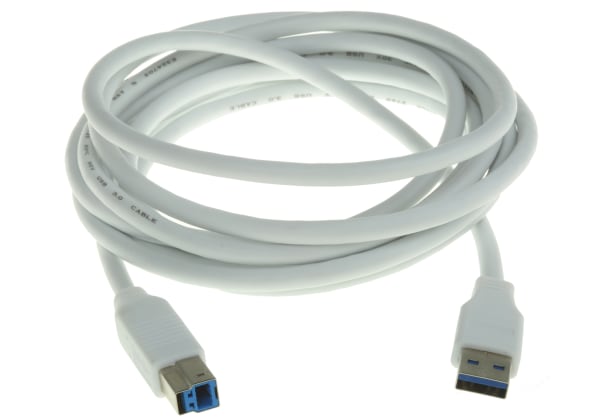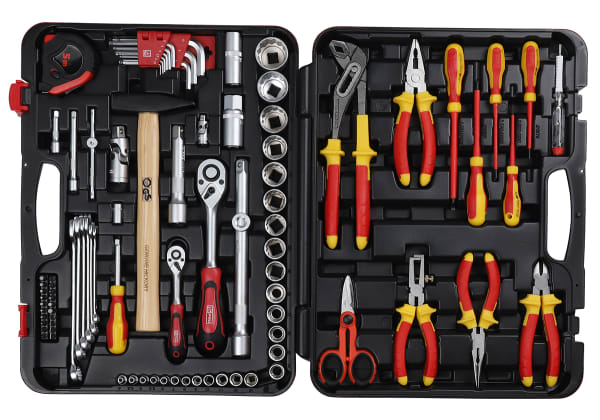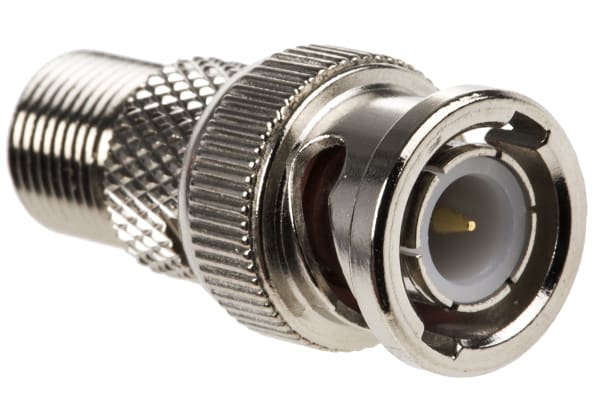- Published 15 Jan 2025
- Last Modified 15 Jan 2025
- 8 min
A Complete Guide to RCA Connectors
Learn about RCA connectors, what they are used for, and the different types available. Explore RCA jacks, plugs, and cables in this comprehensive guide.

This guide explores various types of RCA connectors, what RCA connectors are used for, and how to identify their colour codes.
What Are RCA Connectors?
RCA connectors are a type of electrical connector commonly used to transmit audio and video signals. They are typically found in home entertainment systems, such as televisions, DVD players, and audio amplifiers. RCA connectors are characterised by their round shape and colour-coded plugs, with yellow for composite video, red for right audio, and white for left audio.
Full Form of RCA AV Cable
RCA stands for the “Radio Corporation of America”, which introduced these connectors in the 1940s to connect phonographs to amplifiers. Over time, RCA connectors became the standard for audio and video connections in consumer electronics.
The term "AV cable" signifies the cable's ability to carry audio and video signals. In Australia, RCA AV cables are widely used for connecting various devices, ensuring compatibility with local television and audio systems. They remain a popular choice for home entertainment setups, providing a simple and reliable way to connect audio and video components.
What Is an RCA Connection?
An RCA connection is a method of transmitting analogue audio and video signals between electronic devices. It utilises RCA cables, which consist of a pair of RCA connectors (one male, one female) at each end. These connectors are plugged into corresponding jacks on the devices to establish an audio or video link.
How RCA Connections Work
- Signal Source: The audio or video signal originates from a source device, such as a DVD player or games console.
- RCA Cable: The signal travels through the RCA cable, which consists of insulated conductors.
- RCA Connectors: The male RCA plug on the cable end carries the signal and is inserted into the female RCA jack on the receiving device.
- Signal Reception: The receiving device, such as a television or amplifier, receives the signal through the RCA jack and processes it accordingly.
What Are RCA Jacks?
RCA jacks are the female connectors that receive the male RCA plugs. They are typically found on the back or sides of audio and video devices, such as televisions, amplifiers, and DVD players. Their primary function is to receive the signal carried by the male RCA plugs.
Physically, RCA jacks have a circular metal casing with a central pin that receives the male plug. This pin makes contact with the corresponding pin on the male RCA plug when inserted, completing the electrical circuit and allowing the signal to pass through. RCA jacks are often colour-coded to match the plugs, making it easy to identify the correct connections for audio and video signals.
The materials used in RCA jacks vary depending on the quality and intended application. Standard jacks are typically made of nickel-plated brass, while higher-end devices may feature gold-plated jacks for improved conductivity and signal integrity.
What Are RCA Plugs?
RCA plugs are the male connectors in an RCA connection, designed to transmit analogue audio or video signals. They complement RCA jacks, which are the female connectors found on devices. Together, they establish a connection for transmitting audio or video content.
Physically, RCA plugs consist of a central metal pin that carries the signal, surrounded by a circular metal shield that provides a ground connection. The plug is typically encased in colour-coded plastic or metal for easy identification:
- Red: Right audio channel
- White: Left audio channel
- Yellow: Composite video signal
The quality of RCA plugs can vary significantly. Basic plugs are often made with nickel-plated pins and plastic casings. However, for better signal quality and corrosion resistance, premium plugs with gold-plated pins are available. These higher-quality plugs are often preferred for critical audio and video applications.
What Is an RCA Cable?
An RCA cable, also known as an RCA cord, is a type of electrical cable that uses RCA connectors to transmit audio and video signals. The composition of an RCA cord directly affects its effectiveness in transmitting signals. It usually consists of two or more insulated wires, each terminated with an RCA plug at one end and often colour-coded to match their respective RCA plugs.
RCA Cable Colour Code
The colour-coding system for RCA cables simplifies connections for audio and video equipment, ensuring proper signal alignment. The standard colours are red for the right audio channel, white for the left audio channel, and yellow for composite video. This colour scheme makes it easy to identify and connect the cables correctly, preventing accidental mismatches.
While red, yellow, and white cables are called Composite RCA, some devices may feature Composite Video Cables—Green, Blue, and Red—for component video, which separates the video signal into three components (luminance and two colour difference signals) for higher-quality video transmission. These cords carry separate colour signals (green for Y, blue for Pb, and red for Pr) and are what cable manufacturers use for higher-end televisions and DVD players to achieve better picture quality.
RCA Connector Uses
RCA connectors have a wide range of applications in both domestic and professional settings. Here are some common uses:
- Audio Applications: RCA connectors are frequently used to connect audio devices such as amplifiers, home theatre systems, and speakers. In Australia, they are often found in older car audio systems or retro audio setups.
- Video Applications: RCA connectors are used for both composite and component video connections, commonly found in older televisions, DVD players, and VCRs. They are compatible with PAL-format systems, which are prevalent in Australia.
- Gaming Consoles and Retro Equipment: RCA connectors are often used to connect older gaming consoles, such as PlayStation 1 and 2, as well as Nintendo 64, to televisions. These connectors are popular in Australia's nostalgia market for retro gaming setups.
- Professional and Hobbyist Use: Audio and video enthusiasts often use RCA connectors for custom setups and installations. They are also found in sound mixing and recording studios to connect various audio equipment.
Disadvantages of RCA Connectors
While RCA connectors are widely used and offer certain advantages, they also have some limitations:
- Analogue Signal Transmission: RCA connectors primarily transmit analogue signals. This can result in lower video and audio quality compared to modern digital formats like HDMI. Additionally, analogue signals are more prone to degradation over longer distances, leading to potential signal loss or distortion.
- Lack of Multi-Signal Capability: Each RCA cable typically carries only one signal, either audio or video. This necessitates multiple cables for a complete audio-visual setup, which can be cumbersome and lead to cable clutter. In contrast, modern solutions like HDMI cables can transmit audio, video, and data over a single cable.
- Susceptibility to Interference: RCA connections can be susceptible to electromagnetic interference (EMI), especially in environments with high signal noise. This interference can manifest as buzzing or static in audio signals or visual distortions in video signals.
Types of RCA Connectors
RCA connectors come in various types, ranging from standard straight connectors to specialised right-angle connectors, each designed for specific applications and installation needs.
RCA Connectors for Coaxial Cables
These RCA connectors are designed for use with coaxial cables, commonly employed for digital audio signals. Unlike analogue stereo audio, which requires two RCA cables, coaxial cables transmit digital audio using a single connection. They can support surround sound formats like Dolby Digital and uncompressed PCM stereo audio. These connectors are typically colour-coded black or orange and labelled as "digital out" or "digital in."
Right-Angle RCA Connectors
Right-angle RCA connectors are useful when space is limited, such as behind furniture or against a wall. Their 90-degree design reduces strain on the cable and connector, minimising the risk of damage. They are also suitable for PCB mounting in certain applications.
Straight RCA Connectors
Straight RCA connectors are the most common type, offering a simple and straightforward connection. The male plug aligns with the cable, providing a secure connection with the female jack. While they may require slightly more clearance space, they are generally easy to plug and unplug.
Male RCA Connectors
Male RCA connectors, commonly referred to as RCA plugs, are found at the ends of RCA cables. They are typically cable-mounted and come in various termination methods, including crimp, feed-through, pin, PC pin, and soldered connections. You can find male RCA plugs with different contact plating materials (gold, nickel, silver, tin) and housing materials to suit various applications and performance requirements. They also have different current and voltage ratings, as well as operating temperature ranges, to consider when selecting the right connector.
Female RCA Connectors
Female RCA connectors, also known as RCA jacks or sockets, are designed to receive the male RCA plugs. They are usually located on the back or sides of audio and video devices as part of the input/output panel. Female RCA connectors are often labelled for input or output and may be colour-coded or marked with "L" and "R" to indicate left and right audio channels.
Female RCA connectors offer various mounting options to suit different applications:
Chassis Mount RCA Socket
Chassis mount RCA sockets are designed to be mounted directly onto the chassis or outer casing of a device, providing a secure and integrated connection point.
Panel Mount RCA Socket
Panel mount RCA sockets offer additional fixing points, allowing them to be installed on instrument panels, equipment panels, or within enclosures.
PCB Mount RCA Socket
These sockets are intended for direct mounting onto printed circuit boards, often as part of an input/output array, as seen on computer motherboards.
Snap-In RCA Socket or Screw-In Solderless RCA Socket
These sockets provide a convenient way to add RCA connections to faceplates, surface mount boxes, or patch panels without the need for soldering.


